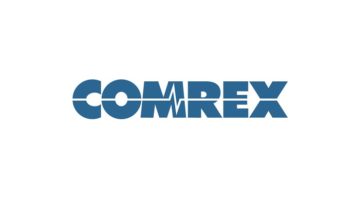SYRACUSE, N.Y. — The summer remote season is always busy, but a few key events require more attention. There were 100 hours of special event broadcasts that we did in the summer of 2011, when I was working with Citadel in that market. The big events that we were tasked to cover were the NASCAR race at Watkins Glen and the New York State Fair in Syracuse. As an early adopter on the 4G LTE network for laptop connectivity, I had been working with Comrex getting 4G LTE driver support for their products. Their engineers were able to deliver drivers that are compatible with the Pantech UML 290 USB wireless modem in both 3G and 4G modes.
Special events
We did our first 4G LTE tests in early July in preparation for NASCAR races at Watkins Glen. Verizon launched 4G LTE in July at the site for the race and concert season. We sent one of our promotions members down there to meet with management to find our location, and also test the Comrex Access portable codec.
Roundtrip transmission delay was around 100 – 150 ms for a 161 kbps/161 kbps codec, as opposed to our typical 500 ms – 1.2 sec roundtrip for a 30 kbps/80 kbps codec on Verizon 3G EVDO. Overall, the lower latency and higher bandwidth on the Verizon 4G LTE network is amazing.
We were able to achieve what we would have if we had dropped a DSL or cable modem at this spot. And here he was, standing with the Comrex Access in the infield, running on battery, no cables at all.
The NASCAR broadcasts at Watkins Glen in August went flawlessly. We broadcast for three hours on Saturday and two hours on Sunday. We were able to use a higher quality codec (higher bitrate) than we would have used on 3G — not a single audio glitch reported. That would have been impossible on 3G technology given the crowd of 85,000 of people at the venue.
The New York State Fair is held annually in Syracuse, and it generally has 900,000 to 1 million attendees for its 12-day run. Needless to say, broadcasting live from the fair is an annual tradition for all TV and most radio stations in the market. Over my years working there, we constantly strived to provide a better broadcast from the venue. Before my time, 15 kHz equalized lines were used. When I started working there 18 years ago, we would use Marti RPU with a 67 kHz FM subcarrier as an IFB/backhaul. In the early 2000s, we switched to ISDN and we added Internet access in 2002 to help with remote control and show prep. As bandwidth and Internet reliability increased over the years, we switched to Comrex Access in 2010 via cable modems.
The fair moved the broadcast location of WAQX(FM) to a new site for 2011. While the site was good from a visibility perspective, it had no telco or cable service. With the 3G networks notoriously clogged with the daily 75,000 to 110,000 attendees, we didn’t have many options. We briefly considered dropping a cable modem at another site on the grounds and then using a 5.8 GHz spread spectrum solution to deliver IP to the broadcast location. However, that would have taken significant resources to execute. With the Verizon 4G LTE network launching just a week before the fair, and given our success in Watkins Glen, we decided to use that as a primary, and then fall back to Marti RPU if needed.
WAQX broadcast daily from the fair and things went extremely well. For codecs, we used AAC stereo 96 kpbs from the fair to the studio, and AAC-LD stereo 128 kbps from the studio to the fair. We also used the Ethernet port on the Comrex Access codec to provide Internet + VPN access to a computer for the hosts to do show prep, check email and remotely control the Scott Studios SS32 on-air automation system.
Interestingly enough, when we were testing before the fair, we decided to see if we could make the 4G LTE network choke. We transmitted stereo, linear 44.1 PCM audio in both directions for four minutes without any drops in audio. That’s pretty impressive knowing you can do that if you wanted, and it’s a good demonstration of the available bandwidth. We would have tested it longer, but alas, with a 5 GB monthly limit, we didn’t want to eat all of our bandwidth up on a test.
Concurrently with the WAQX broadcasts over Verizon’s 4G LTE network, we had WNTQ(FM) and WSKO(AM) broadcasting via cable modems in three separate areas of the fairgrounds.
Overall, the Comrex Access and Verizon’s 4G LTE network provides a robust and flexible way to conduct remotes. My former colleagues in Syracuse report the combination of these two solutions continue to perform well for them, and in fact, Verizon has added additional 4G LTE sites to the market since last summer to improve coverage.
Alan Jurison, CSRE, AMD, DRB, CBNE, is senior operations engineer for Clear Channel, Cincinnati.
For information, contact Chris Crump at Comrex in Massachusetts at (978) 784-1776 or visit www.comrex.com.






